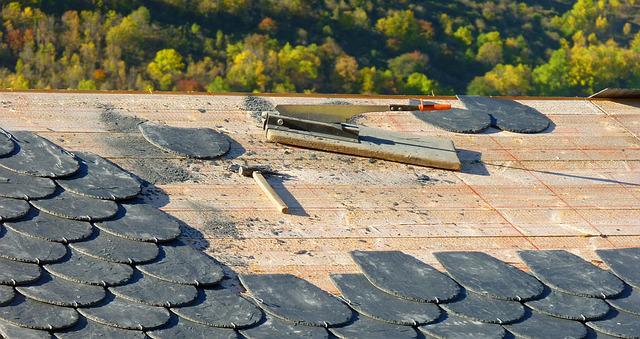There are many types of roofs you might want to install yourself and each requires a different set of skills. This article covers the basics of what to expect when you decide to do it yourself, what your needs are based on your roofing project, and how much time and money you may need.
Table of Contents
Types of Roofing Systems
A roof is one of the most important components of a home. Not only does it protect the interior from the elements, but it also plays a vital role in structuring and cooling the space. Depending on your home’s layout and construction, your roof may have different requirements for protection, efficiency, and aesthetics.
To help you choose the right roofing system for your needs, we’ve outlined the common types of roofs. Keep in mind that there are many other variations on these themes, so don’t be afraid to ask your roofer from Plainfield about specific details.
Gable Roof: A gable roof is a popular type of roof because it offers a lot of versatility. It can be used as a traditional flat roof or as a hipped or raked roof. The main benefit of a gable roof is that it can be easily converted between these two configurations.
A gable roof is a popular type of roof because it offers a lot of versatility. It can be used as a traditional flat roof or as a hipped or raked roof. The main benefit of a gable roof is that it can be easily converted between these two configurations. A typical gable roof has two slopes, as you can see in the image below left. The slope on the side furthest from the eaves will be steeper than the other one.
Types of Materials Used on a Roof
When it comes to roofing, there are a few different types of materials that can be used. These include asphalt, metal, slate, and tile. Each has its own set of benefits and drawbacks, so it’s important to choose the right one for your specific needs.
Asphalt is the most common type of roofing material, and it’s typically the cheapest option. However, asphalt roofs are very vulnerable to water damage and can start to rot after just a few years. If you’re looking for a short-term solution, asphalt may be a good option for you.
Metal roofs are typically more expensive than asphalt roofs, but they’re tougher and last longer. They also tend to resist water damage better than asphalt roofs, but they can be heavier and more difficult to install.
Slate is a popular option for roofing because it’s both tough and lightweight. However, slate roofs can be quite pricey compared to other types of roofs, and they don’t last as long as metal or asphalt roofs.
Tile is the most expensive type of roofing material available, but it also tends to be the most durable. It’s also easy to install, which is why it’s often chosen for high-end homes.
How Much Does A Roof Cost?
There are four main types of roofs: asphalt shingle, metal, tile, and slate. The type of roof you choose will largely depend on your needs and budget. Here are some tips for estimating the cost of a roof:
-First, determine the size of your home and the type of roof you would like.
-Then, calculate the square footage of your roof using the following formula:
-Next, multiply that number by your average monthly housing costs to get an estimate for the total cost per month.
-Add on any applicable taxes and insurance premiums.
-Finally, factor in any other necessary expenses such as flashing or guttering.
Also read: What are the benefits of using steel siding over aluminum?
Conclusion
If you’re thinking of hiring a roofer, it’s important to have an understanding of what they do and the types of roofs they might be able to help with. In this article, we will discuss what to expect from a typical roofing job, as well as give you an idea of the different types of roofs that a roofer may be able to help with. Knowing what your needs are will help narrow down your search for the perfect contractor for your project.
